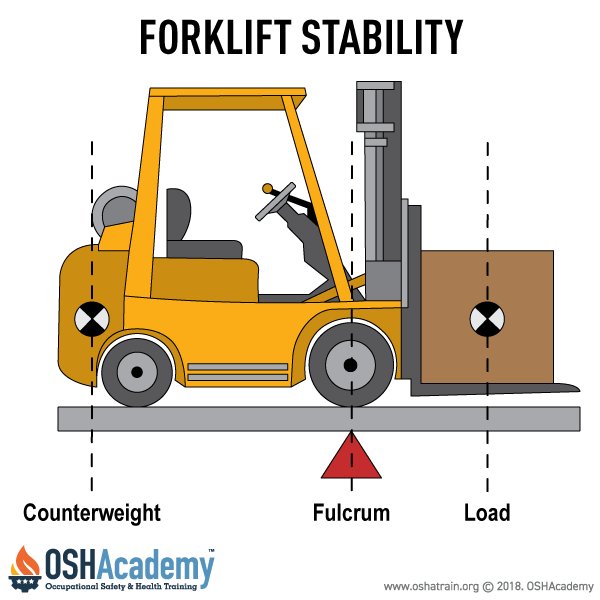Principles of Lifting Loads
A forklift works on four very important principles that must be understood by all operators:
- Fulcrum Principle
- Stability Triangle
- Center of Gravity
- Moment
Fulcrum Principle
The Fulcrum Principle states that a forklift has two weights (load, counterweight), each located on the end of a beam which is balanced on a fulcrum, similar to a playground seesaw.
The load is located on the forks and is balanced by the weight of the forklift with counterweight. The forks are supported by a fulcrum point located along the axle of the front wheels.
Stability Triangle
Operators must also understand the Stability Triangle. All forklifts have a stability triangle with the three sides of the triangle as shown in the illustration to the right. The sides of the triangle are formed by the center of each front wheel and the center of the rear wheel or at the center of the axle if there are two rear wheels.
Just imagine you're riding a tricycle. A tricycle is nothing more than a triangle on wheels. If you peddle around a corner too fast and shift your center of gravity outside the stability triangle, you'll tip over sideways. If you shift your center of gravity over the rear wheels, you are less likely to flip over backwards.
Center of Gravity (CG)
The Center of Gravity (CG) is the point at which the weight on both sides of the fulcrum is equal. The load on the forks is counterbalanced by the weight of the forklift body. Counterweight is built into it. The vehicle-load combination CG must be located inside of the stability triangle to prevent the forklift from tipping forward, falling sideways or dropping its load.
Knowledge Check Choose the best answer for the question.
1-3. What is the point at which the weight on both sides of a fulcrum is equal?
You forgot to answer the question!


